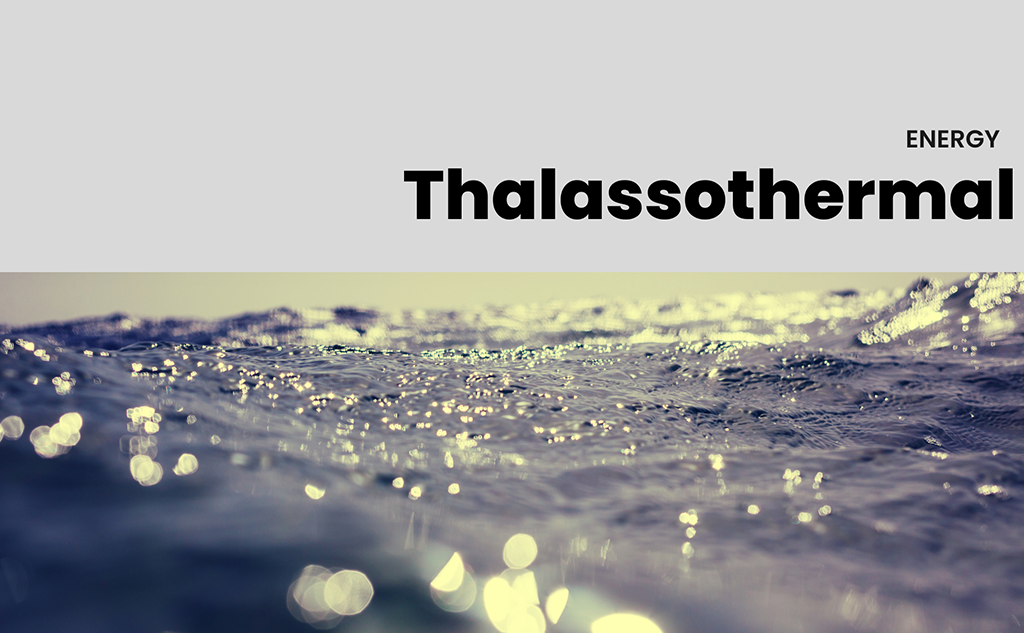Thalassothermal energy represents a promising innovation in the field of renewable energies. Unlike tidal power, wave power or wave energy, this technology, which harnesses the heat energy naturally stored in seawater, has no impact on the marine environment and is not dependent on marine conditions, as seawater is at a virtually constant temperature throughout the year.
At a time when the energy transition has become a necessity in the fight against climate change, thalassothermal energy offers an ecological and sustainable alternative to fossil fuels for heating and air-conditioning systems. A significant advantage for mainland France, which has 5,500 km of coastline.
How thalassothermal energy works
Like geothermal energy, thalassothermal energy (from the Greek thalasso ‘sea’ and thermos ‘heat’) is based on the principle of recovering heat energy and transforming it into energy that can be reused by heating or air-conditioning networks. The difference, however, is that it does not use energy from the ground, but from seawater.
Throughout the year, seawater is naturally heated by the sun to an almost constant temperature (between 12 and 25°C), both at the surface and at shallow depths. This temperate water is collected from the sea at a depth of 5 to 10 metres. It then circulates through heat exchangers that transfer the heat from the seawater circuit to the freshwater circuit that supplies the heat pumps.
In these heat exchangers, the seawater loop and the freshwater loop are separated by a thin wall so that they do not mix. In this way, the seawater is returned to its natural environment, without any major changes and without risk to flora and fauna. On the other side, the fresh water is conveyed to the heat pumps, which use very little energy to bring it up to the desired temperature.
What are the applications and benefits of thalassothermal energy?
Thalassothermal energy offers a sustainable and efficient solution for heating and cooling coastal buildings. In winter, the tempered seawater loop heats the freshwater loop, providing the buildings with heating. In summer, the process is reversed, using the seawater loop to cool the freshwater and cool the spaces. The system also supplies domestic hot water.
In France, the dominant heating and air-conditioning system is still based on fossil fuels. By using a renewable energy source, such as seawater, thalassothermal energy improves the environmental performance of buildings. This reduction in greenhouse gas emissions is essential in the fight against climate change and in meeting France’s and Europe’s energy transition targets.
Thalassothermal energy: the example of the Smartseille eco-neighbourhood
Designed and built by Dalkia Smart Building, a subsidiary of Dalkia (EDF Group), Massiléo is an energy network that uses thalassothermal energy to provide domestic hot water, heating and air conditioning for the 58,000 m2 of buildings (offices, shops, housing and a hotel) in the Smartseille eco-neighbourhood in Marseille.
The installation consists of a tempered water loop linking the heat exchanger to the heat pumps located in the basement of the buildings. These heat pumps simultaneously produce heating, air conditioning and domestic hot water. To further optimise the efficiency of the network, the heat exchangers are titanium-coated to prevent corrosion from seawater. The buildings also exchange heat by recovering waste energy produced during the process. For example, the heat released by the air conditioning in the offices is recovered to produce hot water for the homes, and vice versa.
This energy network, with a capacity to produce 21 MW of heating and cooling, supplies 100% of the eco-neighbourhood’s needs with energy that is 75% renewable and local. It reduces CO2 emissions by 80% compared with a traditional solution.
Thalassothermal energy: promising prospects for the future
Thalassothermal energy represents a significant advance in the field of renewable energies and the energy transition. By harnessing the thermal energy of seawater, this technology reduces dependence on fossil fuels and helps cut greenhouse gas emissions. It offers a sustainable solution for heating and cooling buildings. Many coastal cities, such as Monaco and Marseille, have understood this and have already taken the plunge. Other energy networks are also being developed, notably in the towns of Les Sables-d’Olonne and La Grande-Motte.
However, thalassothermal energy is still in its infancy. The initial costs of installing a heat collection and exchange system, the risks of corrosion from seawater and the potential ecological impact of an unsuitable installation on marine ecosystems are not negligible.
But while thalassothermal energy still has to overcome a number of challenges to reach its full potential, technological advances, particularly in corrosion-resistant materials (such as the titanium used by Dalkia in its designs) and the efficiency of heat exchangers, should rapidly make this technology even more accessible and efficient. Aid and subsidies, such as those awarded by ADEME, from which Marseille benefited for its Massiléo project, are also a step in the right direction.




